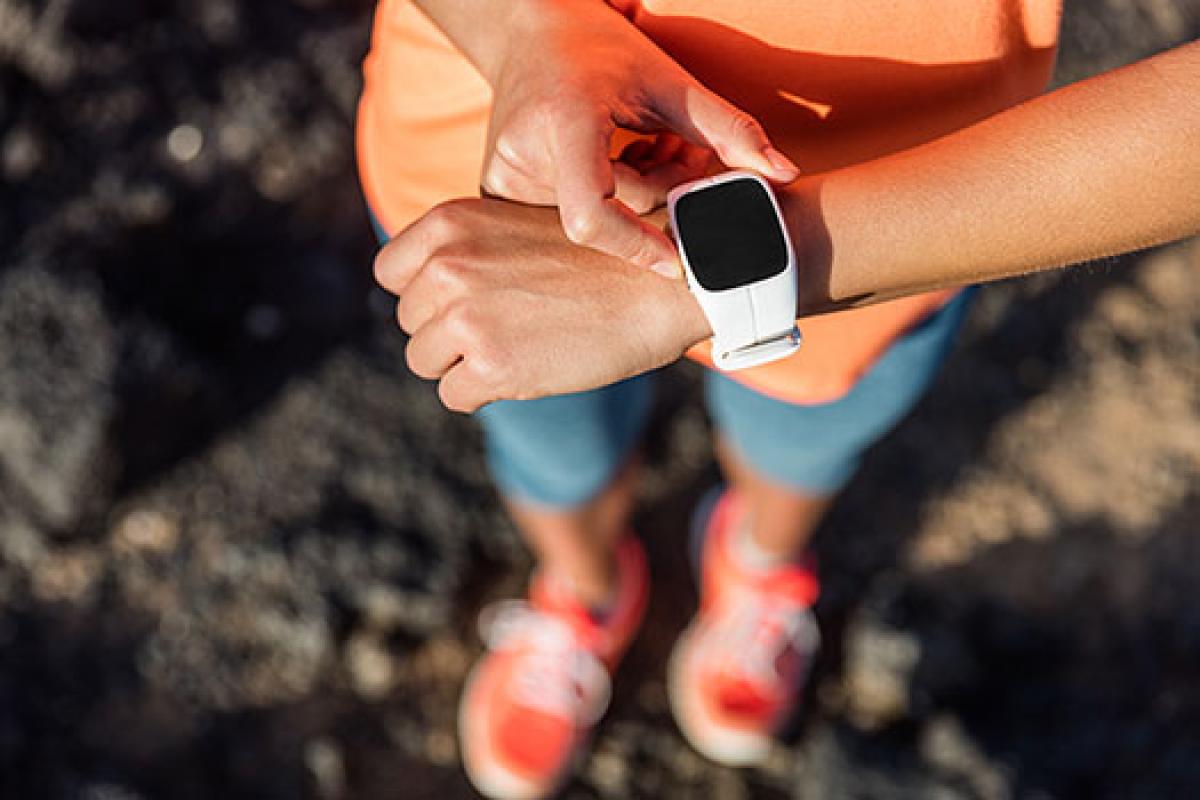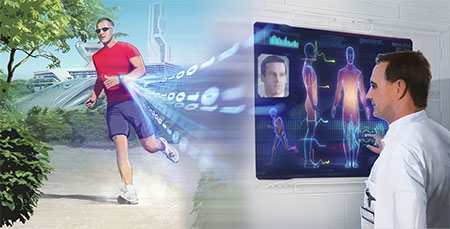
Smartwatches and activity trackers were once a novelty. Now, they’re ubiquitous. According to the market research firm, CCS Insight, the market for smartwatches is expected to grow threefold over the next five years. The mechanical spring-mass driven belt-clip pedometers of yesteryear are now swanky wrist-worn devices that not only count steps, but also track heartrate, calorie burn, activity levels and many exercise metrics. What's going on behind the scenes in computing these metrics? A lot of signal processing.
Making Smartwatches Smarter
Improvements in microcontrollers, semiconductor memories and micro electromechanical sensor (MEMS) technology led to the development of lower power and smaller size motion tracking sensors and faster processor chips that can be squeezed into a small form factor of a wrist watch. Motion sensors include accelerometers that measure movement in three dimensions and gyroscopes that measure rotation or orientation. However, no sensor in the real world is free from noise; a signal processor's bread and butter is extracting useful information from such noisy measurements.
The Science of Smartwatches
The field of statistical signal processing provides tools to deal with problems of signal detection and estimation. Step counting and heartbeat tracking algorithms, two of the most popular smartwatch features, are algorithms that fall in the category of signal detection. A step counting algorithm analyzes snippets of accelerometer data and decides whether each snippet corresponds to a step. A rudimentary step counting algorithm computes the strength of the acceleration at a given time and awards a step if it exceeds a certain threshold. Heart rate tracking algorithms are also detection algorithms but they use data from an optical sensor that picks up scattered light from a light-emitting diode. Each heart beat causes a change in blood volume in the blood vessels which then causes the photodiode to register a “pulsing" signal with each beat. A heart rate algorithm uses snippets of optical sensor data and decides if they correspond to heartbeats. 
Distance tracking falls in the category of signal estimation algorithms. A simple technique would be to estimate distance by multiplying the number of steps by an educated guess for the length of each step. Coming up with an “educated guess" for the step length is in itself another estimation problem! Smartwatches can also combine data from two or more sensors (such as accelerometer and GPS) to generate more accurate estimates of distance. This idea of sensor fusion is key to the success of signal processing algorithms in the real world. In addition to using standard techniques from signal estimation theory, these algorithms also employ some hand-tuned heuristics to make them more robust to uncertainties in real world data.
Machine learning techniques also play a central role in designing algorithms that provide useful insights to users about their activities. Classification algorithms can analyze patterns in data from multiple sensors and automatically recognize whether a person is walking or running, biking or swimming, awake or asleep. Applying machine learning algorithms to data acquired from smartwatch sensors opens up a plethora of exciting applications that can provide personalized insights to users about their daily activities. Intelligent automated recommendations and guidance help users maintain and improve their health.
The field of wearable sensing is growing rapidly because researchers are constantly pushing the boundaries around the ability to non-invasively measure biological signals. However, there is no dearth of marketing gimmicks and devices that make magical claims about sensors and algorithms capable of measuring biological signals that are difficult to measure even in a controlled laboratory setting. Signal processors can help keep the field grounded in reality by weeding out such chimerical claims using their knowledge of fundamental limits of signal detection and estimation.
The signal processing community is a major driving force for innovation in wearable technology. We have a unique skill-set that lies at the intersection of electrical engineering, computer science, statistics and mathematics-areas that are key to developing new sensors and algorithms for smarter smartwatches of the future.
Atul Ingle is currently a postdoctoral researcher in the Department of Biostatistics at University of Wisconsin-Madison. Atul completed his PhD in Electrical Engineering from UW-Madison in 2015, specializing in systems and signal processing. You can reach Atul at ingle.atul@ieee.org or LinkedIn.
